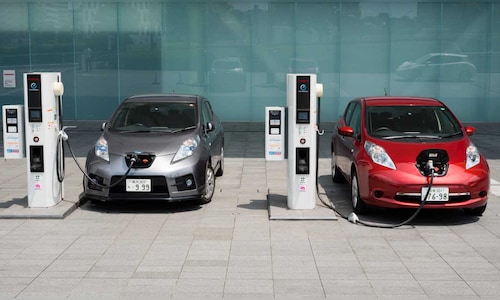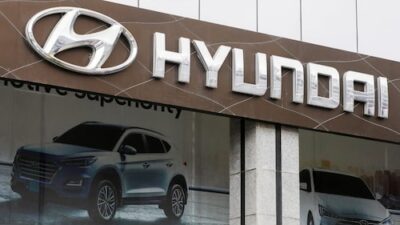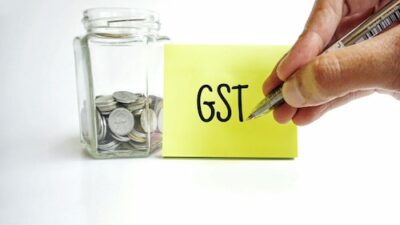With a 25% US tariff now imposed on cars and auto parts, Japan’s leading automakers — including Toyota Motor Corp., Honda Motor Co., Mazda Motor Corp., and Subaru Corp. — are anticipating a combined loss of over $19 billion in this fiscal year alone. This impact isn’t limited to the well-known brands.
In Gunma Prefecture, northwest of Tokyo, where Subaru’s main factory is located, the repercussions are already evident. Due to rising costs, Yoshiyuki Nakajima, president of Shoda Seisakusho Co. — a supplier to Subaru — cautioned that his company will need to reduce profit margins if the tariffs persist. In the worst-case scenario, layoffs may be inevitable. “We’ll have no choice,” he remarked.
This sentiment reflects the broader upheaval affecting Japan’s industrial regions, where a dense network of small to mid-sized suppliers supports the automotive industry — the country’s largest export sector and a critical source of employment and investment. Approximately two-thirds of Japan’s workforce is employed by firms with fewer than 1,000 employees, and many of these jobs are directly or indirectly linked to the auto industry.
The trade shock arrives at a time when Japan has begun to witness signs of a “virtuous cycle” — an upsurge of increasing wages, heightened spending, and rising prices that policymakers hope will extricate the economy from its prolonged stagnation. However, with automakers reconsidering wage increases and curtailing growth plans, the progress Japan has worked hard to establish is at risk of stagnation. About 64% of surveyed economists predict that the tariffs could trigger a recession in the world’s fourth-largest economy.
Even prior to the tariffs, companies like Shoda Seisakusho were grappling with the global transition to electric vehicles. Nakajima has had to downsize at two factories in China and halt new investments. He now perceives pay raises for his 200 workers next year as increasingly difficult. With the US tariffs in the mix, the forecast is bleak.
“I often say that there’s no bright future for us if we simply continue running our business as usual,” Nakajima stated.
The Japanese government is racing to manage the fallout. Prime Minister Shigeru Ishiba, who is gearing up for a national election next month, needs to demonstrate his ability to safeguard Japan’s economic interests. His chief trade negotiator Ryosei Akazawa is expected to make his sixth trip to North America, seeking concessions ahead of the G-7 summit in Canada on June 15, where Ishiba may have a direct meeting with Trump.
Analysts view Tokyo’s most favorable outcome in the negotiations as reducing the auto tariffs to 10%, which would mitigate but not erase the damage.
Typically, tariff costs are distributed — approximately one-third is borne by suppliers, another third by carmakers, and the last third by consumers, according to Tatsuo Yoshida, a senior auto analyst at Bloomberg Intelligence. He estimates that a 10% tariff could be manageable over time, with gradual price hikes of 2% to 3% annually, along with updates to car models to maintain consumer interest. However, as tariffs increase, the strain intensifies.
Tariffs approaching 25% could jeopardize several of Japan’s automakers, placing them on the brink and in need of assistance, Yoshida indicated. “Similar to General Motors during the global financial crisis, Japan’s carmakers are simply too significant to fail,” he explained.
The statistics related to the auto industry highlight the importance of the situation. The sector employs 5.6 million people — about 8.3% of Japan’s workforce — and contributes roughly 10% to gross domestic product, as stated by the Japan Automobile Manufacturers Association. It is a trendsetter for wage growth in Japan and plays a significant role in trade. Automobiles and their components constitute a third of Japan’s exports to the US, the largest export market and a major factor in Tokyo’s trade surplus with Washington — the very imbalance that Trump has long criticized.
Of the approximately 9 million vehicles produced in Japan each year, 1.5 million are exported to the US. Subaru is particularly exposed, as 71% of its sales come from that market, according to Bloomberg Intelligence.
Subaru has indicated it will incur a $2.5 billion loss due to the tariffs in the fiscal year ending March 2026. One potential solution could be relocating some production to the US, where domestically manufactured cars face lower taxes. However, this complicates matters for many suppliers reliant on local production. Chief Executive Officer Atsushi Osaki noted that a shift may be necessary. Subaru “will continue developing our products in Japan, but it’s unavoidable for us to expand our capacity in the US,” he remarked last month.
At Daido Steel Co. in Aichi Prefecture, which produces magnets used in hybrid engines and employs around 12,000 workers, anxiety is mounting. Although it does not export directly to the US, the firm supplies Honda and indirectly serves all major Japanese automakers, so the ramifications of Trump’s tariffs will be substantial.
“It depends on how carmakers respond,” stated Mikine Kishi, general manager of Daido Steel’s corporate planning division. “If they decide to cease manufacturing in Japan or reduce overall production volumes, it would have an enormous impact on our operations.”
Some automakers have already begun to make adjustments. Honda has delayed its $11 billion EV supply chain expansion in Canada and is transferring production of the hybrid Civic model from Japan to the US. Subaru is reconsidering all of its investments, including EV development. Nissan Motor Co. has stopped US orders for SUVs manufactured in Mexico, and Mazda is halting exports to Canada of a model produced at its Alabama joint venture with Toyota.
Toyota, the world’s largest automaker, has yet to shift production, but CEO Koji Sato has indicated that the company is contemplating expanding its production capabilities in the US over the medium to long term.
The situation is different for smaller companies. For Hasegawa Yuuki Co., which employs about 50 individuals in Gunma and produces plastic components for Honda, Subaru, and Nissan, a 15% tariff represents the threshold between tolerable and severe distress, according to President Noriyuki Hasegawa.
The company is already losing 5% of its business after Honda relocated its production to Alabama. “I don’t have much faith in the negotiations,” Hasegawa stated. “Japan doesn’t possess much negotiating leverage.”
Hasegawa is exploring new sectors such as furniture storage. “Our automotive-related business is bound to suffer, so we must consider developing products for areas outside of cars,” he remarked. “We’ll need one or two additional pillars to compensate for the losses.”
Read Also: Chinese mid-cap stocks to thrive on AI boom, Ox Capital says
For others, the objective is survival. At Ogami Co., another plastic parts manufacturer in Gunma supplying Subaru and others, President Hiroaki Ogami states that he is halting capital investments, while wage increases for next year appear increasingly unlikely. Larger firms might weather the storm by expanding internationally, but smaller companies like Ogami lack the capital and flexibility to do so.
The company operates a factory in the Philippines, but tariffs apply there as well. These charges could further squeeze their already narrow profit margins of less than 10%, according to Ogami.
Japan’s central bank is monitoring the situation closely. The Bank of Japan has long maintained that stable growth and inflation rely on consistent wage increases. Roughly speaking, this entails wage growth of 3% to reach a price growth of 2%. For over a decade, the BOJ has attempted to cultivate this outcome through extensive stimulus, purchasing more government bonds and other assets than the size of the economy.
Core inflation has remained above 2% for nearly three years, allowing the BOJ to initiate policy normalization and begin raising interest rates. However, it remains cautious. Japan’s economy shrank in the first quarter, partly due to weak consumer spending, despite wages rising over 2%. Another contraction would push the country into a technical recession.
BOJ officials have expressed their concerns. In a summary of opinions from their April-May meeting, board members mentioned tariffs 27 times. One member issued a warning about disruptions to supply chains, slower growth, and adverse effects on wages.
Recently, Ishiba indicated that his top promise in the upcoming upper house election would be to increase wages by at least 50% over the next 15 years. This suggests an annual wage increase of about 2.75%, a daunting task if Trump’s tariffs remain in effect.
Like many others in the auto sector, Ogami noted he’ll be closely following tariff developments, pondering whether the new wave of protectionism will extend beyond Trump’s presidency. His company has survived various setbacks, including the global financial crisis, the 2011 tsunami, earthquake, and nuclear disaster, as well as the pandemic, but he is uncertain this time.
“It’s not as if we can simply say, ‘Let’s endure this for four years,’” Ogami said. “If conditions persist, we won’t survive. We need to devise a solution.”
Also Read: Oracle sees ‘dramatically higher’ sales, boosting cloud momentum



